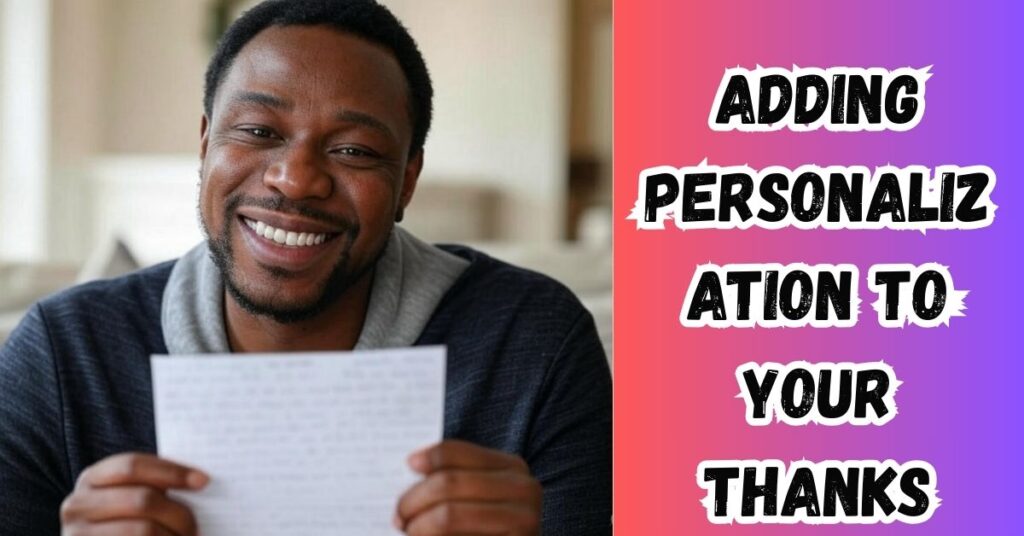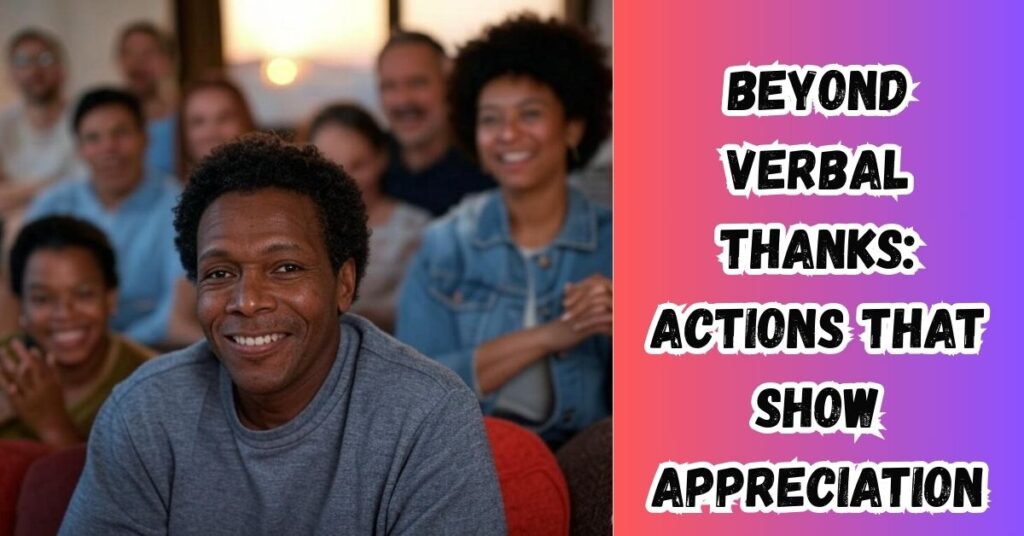In today’s fast-paced professional environment, expressing gratitude properly can strengthen workplace relationships. Simple acknowledgments can make a significant difference in how your communication is received.
Finding the right words to express appreciation for information shared is an essential skill in both professional and personal contexts.Every time someone shares valuable details with you, they’re investing their time and knowledge in your success.
Your response matters more than you might think. Let’s explore meaningful ways to show appreciation beyond the standard “thank you for the information.”
Why Expressing Gratitude Matters in Professional Communication
Saying thank you appropriately is about more than just politeness it’s a cornerstone of effective professional communication. Here’s why it matters:
- Builds stronger workplace relationships through positive reinforcement
- Encourages continued information sharing in the future
- Creates a culture of appreciation and respect
- Improves team communication dynamics
- Demonstrates your professionalism and emotional intelligence
- Acknowledges the time and effort others invest in helping you
- Sets you apart as someone who values colleague interaction
- Establishes better communication etiquette in your organization
- Shows genuine appreciation rather than perfunctory acknowledgment
- Creates a positive impression that lasts beyond the current exchange
Taking a moment to craft a thoughtful response shows that you value both the information and the person who provided it. This small gesture can significantly impact your professional relationships.
35 Professional Alternatives to “Thank You for the Information”
For Casual Workplace Settings
- “Thanks for the info. It really helped clear things up for me.” Perfect for when someone resolves your confusion.
- “I appreciate you taking the time to explain that. I understand it so much better now.” Ideal after someone gives a detailed explanation.
- “Thanks for letting me know. I didn’t even realize that was an issue.” Great response for unexpected but helpful alerts.
- “Thank you for pointing that out. It’s really helpful to have all the details now.” Works well when someone fills information gaps.
- “Thanks for sharing that info. It’s exactly what I needed to figure things out.” Use when information directly solves your problem.
- “I really appreciate you taking the time to share this. It’s a big help.” Emphasizes their effort in sharing with you.
- “Thanks for the update. That clears up a lot of things I was wondering about.” Perfect for receiving clarifying information.
- “Appreciate the details. That’s really going to make things easier for me.” Acknowledges how their information simplifies your task.
- “Thanks for explaining that so clearly. I feel a lot more confident about it now.” Shows how their clarity boosted your understanding.
- “Thanks for keeping me in the loop. It’s super helpful to know this now.” Ideal for timely updates.
- “Thanks so much for sharing this. It’s just what I needed to get started.” Perfect when information helps you begin a project.
- “I appreciate the insight. It’s already making things much clearer for me.” Shows immediate value of their contribution.
For More Formal Business Communication

- “Thank you for providing such comprehensive information. Your thoroughness is greatly appreciated.” Formal acknowledgment of detailed information.
- “I’m grateful for your prompt response and the detailed information provided.” Recognizes both speed and quality.
- “Thank you for sharing your expertise on this matter. Your insight is invaluable.” Acknowledges their specialized knowledge.
- “Your timely update is much appreciated. This information will guide our next steps.” Shows how their information impacts planning.
- “Thank you for the clarification. This allows me to proceed with confidence.” Formal way to acknowledge clarity provided.
- “I appreciate your attention to detail in sharing this information.” Recognizes thoroughness in professional settings.
- “Thank you for this well-structured explanation. It provides excellent context for the project.” Acknowledges quality of presentation.
- “I value the time you’ve taken to compile this information. It’s precisely what was needed.” Formal recognition of effort.
For Email and Written Communication
- “Thank you for the detailed report. The information you’ve provided will be extremely useful for our analysis.” Specific to written reports.
- “I appreciate your thorough email. The points you’ve outlined clarify several outstanding questions.” Acknowledges email communication.
- “Many thanks for sharing these findings. They provide valuable perspectives on the situation.” Good for research or analysis sharing.
- “Thank you for documenting this information so clearly. Your written explanation makes complex concepts accessible.” Recognizes clarity in writing.
- “I appreciate you taking the time to compile this information in writing. Having this documented reference will be helpful moving forward.” Values documentation.
For Team Settings and Collaborative Environments
- “Thanks for sharing this with the team. Your input adds significant value to our project.” Acknowledges public contribution.
- “I appreciate you bringing this information to our attention during the meeting. It sparked an important discussion.” For meeting contributions.
- “Thank you for this collaborative effort. The information you’ve shared strengthens our approach.” Emphasizes teamwork.
- “Your willingness to share this information demonstrates great team spirit. Thank you.” Recognizes the collaborative mindset.
- “Thanks for contributing this vital information to our knowledge base. The whole team benefits from your insight.” Acknowledges wider impact.
READ MORE THIS BLOG : I Just Want Us to Be Happy Together Quotes: Celebrating Love and Joy
For Personal or Casual Interactions
- “Thanks for filling me in. I didn’t realize how much I was missing before this!” Works well with friends or close colleagues.
- “I’m so glad you shared this. It answers a lot of questions I had.” Shows personal appreciation.
- “Thanks for pointing me in the right direction. This is exactly what I was looking for.” Casual gratitude for guidance.
- “I appreciate you taking the time to explain this it’s really helpful to have the full picture.” Shows value of context.
- “Thank you for keeping me informed. I’ll definitely make good use of this.” Shows intention to apply information.
How to Choose the Right Expression of Gratitude

Selecting the most appropriate way to express gratitude depends on several factors:
- Relationship with the person providing information
- Formality of your workplace or the specific situation
- Significance of the information received
- Method of communication (email, in-person, message)
- Cultural context of your workplace
- Your personal communication style
- The effort involved in sharing the information
- Whether public or private acknowledgment is more appropriate
- If follow-up questions might be needed
- The timing of your response
The key is matching your level of gratitude to the value of the information and the effort taken to share it. A quick update might warrant a simple thanks, while detailed guidance deserves more elaborate appreciation.
When to Use Formal vs. Casual Expressions of Gratitude
Understanding when to use formal versus casual expressions helps maintain appropriate professional courtesy:
Formal Situations:
- Communication with senior leadership
- Interactions with clients or external stakeholders
- Official business documents or emails
- First-time communications with new contacts
- Highly regulated or traditional industries
- International business communications
Casual Situations:
- Day-to-day team interactions
- Communication with close colleagues
- Informal workplace environments
- Creative industries with relaxed culture
- Quick messaging platforms or chat apps
- Regular ongoing collaborations
Remember that your company culture and industry norms should guide your choice. When in doubt, slightly more formal appreciation is usually safer.
Adding Personalization to Your Thanks

Generic expressions of gratitude can sometimes feel hollow. Adding personalization strengthens the impact:
- Mention specifically how the information helps you
- Reference a particular detail that was especially useful
- Acknowledge the effort or expertise evident in their sharing
- Connect the information to a current project or goal
- Express how their input changed your understanding
- Share how you plan to apply their information
This personalization transforms a standard “thank you” into meaningful appreciation language that builds stronger connections.
Cultural Considerations in Expressing Gratitude
Different cultures express and receive appreciation differently. Consider these cultural nuances:
- Some cultures value direct, explicit expressions of thanks
- Others prefer implicit gratitude shown through actions
- Certain cultures may find effusive thanks uncomfortable
- The appropriate level of formality varies across cultures
- In some contexts, written thanks may be expected to follow verbal appreciation
- Reciprocity expectations differ across cultural contexts
Being sensitive to these differences shows respect and enhances cross-cultural communication etiquette.
READ MORE THIS BLOG : Valentine’s Day Wishes & Quotes for Every Stage of Love
Digital Etiquette for Expressing Gratitude
When expressing thanks through digital channels, consider these best practices:
- Match your response medium to the original communication
- Acknowledge receipt promptly, even if detailed response comes later
- Consider whether public or private thanks is more appropriate
- Use appropriate formatting for readability in digital communications
- Be mindful of reply-all decisions when expressing thanks
- Consider whether an emoji or reaction is sufficient in casual contexts
Digital communication requires thoughtful consideration of both the message and the medium for effective response etiquette.
The Impact of Timely Appreciation
Timing matters when expressing gratitude:
- Immediate acknowledgment signals respect for the sender
- Prompt thanks encourages future information sharing
- Delayed gratitude may diminish its perceived sincerity
- Time-sensitive information warrants faster recognition
- For significant contributions, initial quick thanks followed by more thorough appreciation
- Regular expressions of gratitude maintain positive communication patterns
Your timely response demonstrates that you value both the information and the person who shared it.
Beyond Verbal Thanks: Actions That Show Appreciation

Sometimes, actions speak louder than words when expressing gratitude:
- Implement suggestions and acknowledge their source
- Share how you applied their information successfully
- Reciprocate by offering helpful information in return
- Recognize their contribution to others when appropriate
- Follow up with results from using their information
- Include them in relevant future discussions
These actions reinforce your verbal thanks and build stronger professional feedback loops.
Frequently Asked Questions
Is a simple “thank you” enough in professional settings?
While a simple “thank you” is better than nothing, it often misses an opportunity to build rapport and show genuine appreciation. Adding specificity about how the information helps you demonstrates that you actually value their contribution.
How should I thank someone for information in a group setting?
Public acknowledgment in group settings should be brief but specific. Mentioning how their input advances the group’s goals validates their contribution without derailing the discussion. Follow up with more detailed thanks privately if appropriate.
When is email the right medium for expressing thanks?
Email is appropriate for formal situations, when acknowledging detailed information, when creating a record of the exchange, or when you want to include specific details about how the information helped. For quick updates, a verbal or instant message thanks may suffice.
How do I express gratitude without sounding overly formal or stiff?
Focus on being specific rather than effusive. Share how the information helped you personally rather than using generic phrases. Using a warm, conversational tone while maintaining professionalism strikes the right balance.
How can I show appreciation for regular information without sounding repetitive?
Vary your expressions of thanks and focus on different aspects of the information shared. Occasionally mentioning how their consistent updates have helped over time acknowledges their ongoing contribution without repetitive language.
Conclusion:
Mastering the art of expressing gratitude for information goes beyond mere politeness it’s a valuable communication skill that enhances workplace relationships. The way you acknowledge others’ contributions reflects your professional character and builds a foundation for continued collaboration.
When you take the time to craft thoughtful, specific expressions of appreciation, you transform routine exchanges into opportunities for connection. Remember that genuine thanks isn’t just about the words you choose, but about acknowledging the value others bring to your work.

Bolt is a seasoned SEO expert with a passion for content writing, keyword research, and web development. He combines technical expertise with creative strategies to deliver exceptional digital solutions.
















